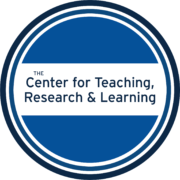Open Educational Resources (OER)
Open Educational Resources (OER) are teaching and learning materials that are made freely available under open licenses. These licenses explicitly allow legal reuse and distribution. OER are available in many disciplines and include textbooks, articles, videos, simulations, and more. They may be used in place of published textbooks or to supplement other course materials.
1. Open Licenses allow authors and other creators to waive certain copyright provisions.
Open licenses, such as those made available by Creative Commons, allow authors and other creators to waive certain provisions automatically protected by copyright. For example, blog authors might license their blog posts under a Creative Commons Attribution-NonCommercial License, which would allow anyone to copy, reuse, revise, or otherwise make use of their original blog posts so long as the new use is noncommercial in nature and the new use includes an attribution of the original blog work. Open licenses allow creators to legally make use of many of the sharing behaviors technologically enabled by Internet connectivity.
2. OER can be found in many places, including OER Commons, MERLOT, and the database CTRL maintains.
There are a number of ways to seek out and find OER. You might start with a repository such as OER Commons or MERLOT. You might peruse the CTRL-maintained collection of OER. You might use the Creative Commons filtering options to filter Google or YouTube results. Most importantly, you’ll want to take a look at the license and terms of use of any particular resource to determine how you may use the material.
3. Many existing OER can be personalized for your course.
Many OER are licensed to allow subsequent users to make modifications to the original works. This practice enables high levels of customizability and localization to a specific context. For example, BC Campus, an educational group in British Columbia, made a derivative adaptation of OpenStax College’s Introduction to Sociology. This textbook was originally published under a CC BY license, which is the most open of the Creative Commons licenses. Since OpenStax’s original text was developed for an American student audience, the BC Campus adaptation localized the original text by replacing U.S.-centered examples with Canadian ones. The CC BY license permitted BC Campus to legally make these changes without needing to seek out specific permission or collaboration from OpenStax College.
4. Anyone can create and share OER.
Anyone with an Internet connection can create and share OER. They are often used as a means to formalize content-sharing between teachers as well as to extend such sharing internationally. There are a number of OER repositories to which individual users can contribute. OER Commons and MERLOT are two such repositories.
5. Open pedagogy is the hallmark of OER.
Collaboration, transparency, and sharing are all incorporated into the teaching practice of open pedagogy. This practice can take many forms and may even include students in the development of OER. For example, Robin DeRossa, a professor of interdisciplinary studies at Plymouth State University, describes a collaboration between herself and her students in her blog post documenting the process of developing The Open Anthology of Earlier American Literature: An OER Anthology of Earlier American Literature, to 1899.
6. Using OER can significantly lower the cost of textbooks for students.
As OER are free by definition, they are one way to reduce the climbing cost of textbooks for today’s students. According to a 2013 GAO Report, textbook prices increased 3 times more than the rate of inflation between 2002 and 2012. Undergraduates at American University are anticipated to spend an average of $800 per year on textbooks and supplies, on top of tuition and fees. Not surprisingly, students sometimes forgo acquiring texts that they cannot afford. Because of their free nature, OER are one way to help students mitigate growing costs.

